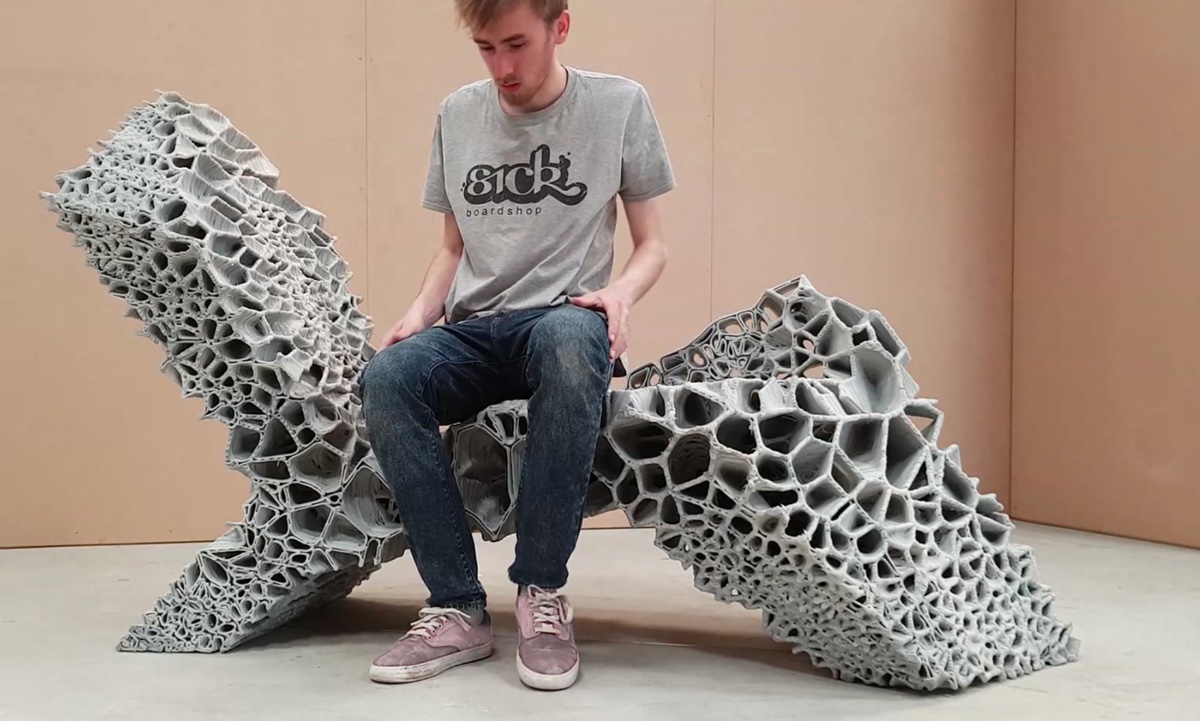Downloads
DOI:
https://doi.org/10.7480/spool.2019.1.3892Keywords:
structural adaptation,, adaptive design strategies, robotic printingAbstract
Adaptive design strategies have been employed to improve structural performances in terms of load-bearing efficiency and energetic impact as well as to achieve multi-functionality. In this work, we investigate a passive adaptation strategy that employs variable stiffness in robotically printed materials. This paper focuses on the design and robotic fabrication of a chaise longue that can change shape to function as both recliner and chair depending on user requirements. The approach is unique in the way computational design is linked with robotic production. In this context, the design of the chaise longue is not limited to a formal process, but extends to the synthesis of the material distribution layout in order to achieve the intended functional behaviour.
How to Cite
Published
Issue
Section
Categories
License
Copyright (c) 2020 SPOOL

This work is licensed under a Creative Commons Attribution 4.0 International License.
Plaudit
References
Bier, H., Hidding, A., Wang, Q., Teuffel, P., & Senatore, G. (2018). Robotic Building - Variable Stiffness. Retrieved from http://www.roboticbuilding.eu/project/adaptive-stiffness/.
Bier, H., Liu Cheng, A., Mostafavi, S., Anton, A., & Bodea, S. (2018). Robotic Building as Integration of Design-to-Robotic-Production and -Operation. In Robotic Building. Springer Series in Adaptive Environments, pp. 97-119. Cham: Springer.
Bier, H., Mostafavi, S., Anton, A., & Bodea, S. (2017). Robotic Building - Scalable Porosity. Retrieved from http://www.roboticbuilding.eu/project/scalable-porosity/.
Martinez, J., Song, H., Dumas, J. & Lefebre, S. (2017). Orthotropic k-nearest foams for additive manufacturing. ACM Transactions on Graphics, Association for Computing, vol. 36, no. 4, pp. 121:1 - 121:12.
Martinez, J., Song, H., Dumas, J., & Lefebre, S. (2016). Procedural Voronoi Foams for Additive Manufacturing, ACM Transactions on Graphics, Association for Computing Machinery, vol. 35, pp. 1-12.
Senatore, G., Duffour, P., & Winslow, P. (2018). Energy and Cost Analysis of Adaptive Structures: Case Studies. Journal of Structural Engineering (ASCE), vol. 144, no. 8, p. 04018107.
Senatore, G., Duffour, P., Hanna, S., Labbe, F., & Winslow, P. (2011). Adaptive Structures for Whole Life Energy Savings. International
Association for Shell and Spatial Structures (IASS), vol. 52, no. 4 December n. 170, pp. 233 – 240.
Senatore, G., Duffour, P., Winslow, P., & Wise, C. (2018). Shape Control and Whole-Life Energy Assessment of an “Infinitely Stiff” Prototype Adaptive Structure. Smart Materials and Structures, vol. 27, no. 1, p. 015022.
Teuffel, P. (2004). Entwerfen Adaptiver Strukturen. (Doctoral dissertation). University of Stuttgart - ILEK, Struttgart, 2004.
Wang, Q., Senatore, G., Teuffel, P., Hidding, A., & Bier, H. (2018). Adaptive Joints with Variable Stiffness. Retrieved from https://infoscience.epfl.ch/record/233669/files/Gennaro%20Senatore%20et%20al%20IASS%202017.pdf



